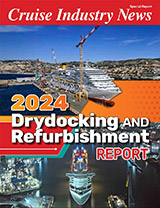A pressing industry concern is the congestion in the more popular ports, according to the 2013 Cruise Industry News Annual Report.
Consider this: Today, of 6.1 million Europeans that cruise, 56 percent cruise in the Mediterranean, where the total cruise capacity is just north of 4 million.
>> Order the 2013 Annual Report by clicking here.
What will happen if the industry’s growth scenario for Europe comes to pass and 18 million more Europeans start cruising? How will the ports be able to handle 13.5 million passengers (56 percent of 24 million) plus passengers from other markets?
It may be a long-term problem, but it will be there as the industry continuous to grow, unless ports speed up their development, according to the report.
So far, some cruise lines are complaining that many ports are focused on their cargo business and fail to see the economic impact of cruise ship calls.
One major cruise line went so far as to suggest that the Greek Minister of Tourism is not even aware of the cruise industry.
Turkey, which has several very successful cruise ports, has published a 64-page Tourism Strategy 2023 document, and devotes a total of 16 lines on double-column pages to what it calls Sea Tourism, concluding that it will renew and expand its facilities. Yet the document devotes much more space to yacht marinas, ecotourism, golf tourism, etc.
To accommodate bigger ships and more passengers, ports need to continue to develop along with the shoreside infrastructure, offering shore excursions and activity options for passengers who do not take tours.




